Top 12 Hiking Trails in California: Ultimate Hiker’s Guide for 2025
- March 26, 2024
- 0 comment
Discover the top 12 hiking trails in California for 2025, from scenic coastlines to rugged mountains. Your ultimate guide to adventure awaits. California, a land of unmatched natural diversity, offers some of the most breathtaking trails in the world. From the misty coasts of the Pacific to the rugged peaks of the Sierra Nevada, the state’s landscapes provide a backdrop for unforgettable hiking adventures.
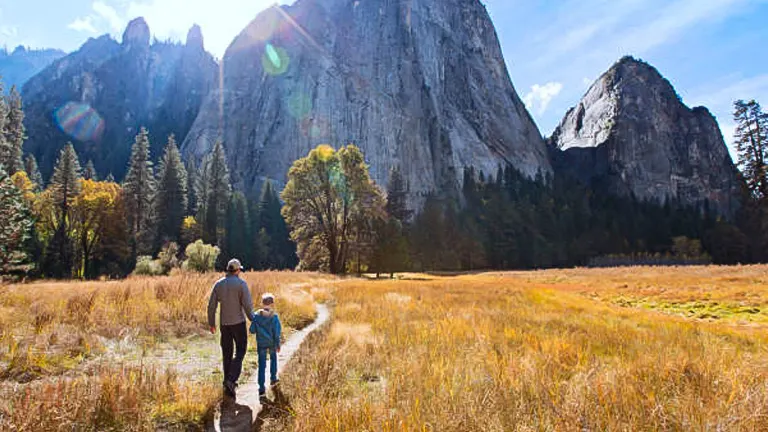
As we venture into 2025, staying updated with the most current trail information ensures hikers can fully enjoy California’s natural beauty safely and responsibly.
List of Top 12 Hiking Trails in California
- John Muir Trail
- Pacific Crest Trail
- Yosemite Falls Trail
- Mount Whitney Trail
- Lost Coast Trail
- Tahoe Rim Trail
- Big Sur Coastal Trail
- Sequoia National Park Trails
- Joshua Tree National Park Trails
- Anza-Borrego Desert State Park Trails
- Lassen Volcanic National Park Trails
- Redwood National and State Parks Trails
Why Hike in California?
California’s trails are as diverse as they are numerous, catering to hikers of all levels. Here’s why the Golden State remains a premier destination for hiking enthusiasts:
- Diverse Terrain: Whether you prefer the serene beauty of coastal walks, the challenge of mountain peaks, the tranquility of forests, or the stark contrast of desert landscapes, California has a trail for you.
- Year-Round Accessibility: Thanks to California’s mild climate, many of its trails are accessible year-round, offering unique experiences in every season.
- Ecological and Geographical Marvels: Hiking in California is not just about the exercise or the views. It’s about witnessing the state’s vast array of ecosystems, from ancient redwood forests to alpine tundra and everything in between.
How to Prepare for Hiking in California
Preparation is key to a safe and enjoyable hiking experience. Here’s what you need to know before hitting the trails:
- Gear Essentials: The right gear can make or break your hike. For most trails, essential gear includes a reliable pair of hiking boots, a backpack with hydration capacity, sun protection, and layers to adapt to changing weather conditions. For specific terrains like deserts or snow-covered peaks, specialized gear such as gaiters or trekking poles may be necessary.
- Safety Tips and Environmental Considerations: Always check the weather conditions and trail status before heading out. Be aware of the local wildlife and how to safely coexist. Carry a map, compass, or GPS device, as cell service can be unreliable in remote areas. Understanding and respecting the environment is crucial; stay on designated trails to prevent erosion and protect native habitats.
- Permit Requirements: Some of California’s most iconic trails require permits to limit the impact of hiking on fragile ecosystems. Applications for these permits can be competitive, so plan ahead and apply early.
List of Top 12 Hiking Trails in California
1. John Muir Trail
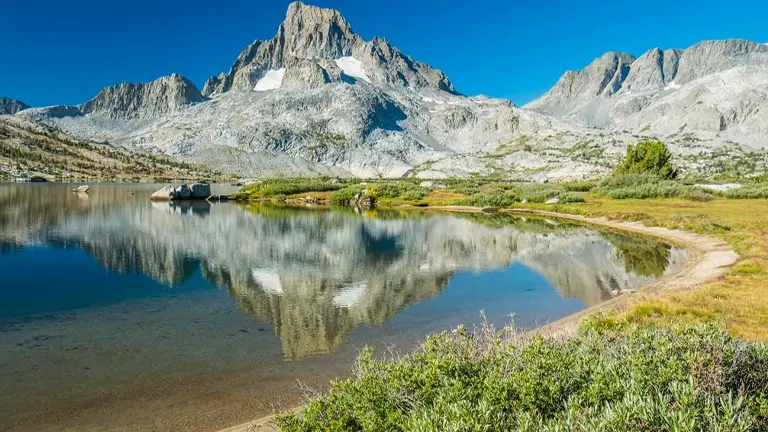
Spanning approximately 211 miles through the heart of the Sierra Nevada, this trail offers an epic journey through some of the most stunning wilderness areas. Highlights include Yosemite Valley, Ansel Adams Wilderness, and Mount Whitney. It’s a demanding trek, best suited for experienced hikers with a good level of fitness and preparation.
- Length: 211 miles (340 km)
- Elevation Gain: Over 46,000 feet (14,000 m) cumulatively
- Difficulty: Strenuous
- Permits: Required for overnight hikes; book well in advance.
- Best Time to Hike: Late June to early October, depending on snow conditions.
- Tips: Prepare for altitude sickness, and consider mail drops or food caches for resupply.
2. Pacific Crest Trail
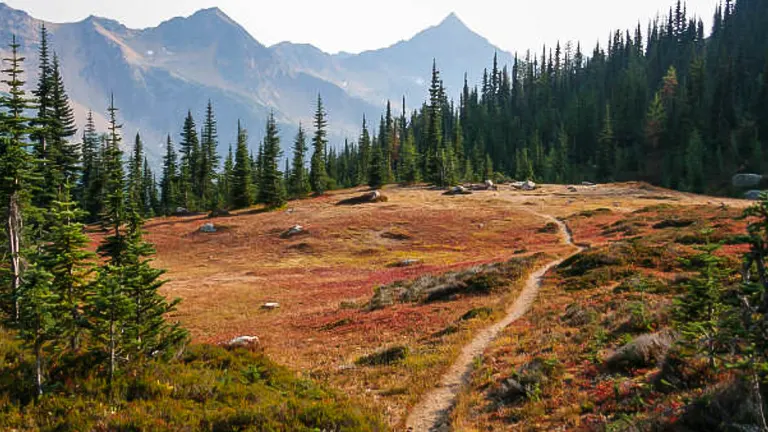
The PCT traverses California from its southern border with Mexico to the northern boundary with Oregon. While thru-hiking the entire trail is a massive undertaking, sections like the stretch through the Sierra Nevada offer a breathtaking glimpse into California’s varied landscapes. This section is renowned for its scenic beauty, passing through national parks and protected wilderness.
- Length: 1,690 miles (2,720 km) in California
- Elevation Gain: Varies significantly across different sections.
- Difficulty: Moderate to strenuous, depending on the section.
- Permits: Required for overnight stays in certain areas.
- Best Time to Hike: Typically May through September, varies by section.
- Tips: Be prepared for diverse weather conditions; plan your water sources carefully in desert sections.
3. Yosemite Falls Trail

This trail leads to the top of North America’s tallest waterfall. A strenuous hike, it rewards adventurers with unparalleled views of Yosemite Valley and the High Sierra. The round trip is about 7.2 miles and can be completed in a day by those with a moderate to high fitness level.
- Length: 7.2 miles (11.6 km) round trip
- Elevation Gain: 2,700 feet (823 m)
- Difficulty: Strenuous
- Permits: Not required for day hikes.
- Best Time to Hike: Late spring when the waterfalls are at their peak.
- Tips: Start early to avoid crowds and the midday heat; bring plenty of water and wear sturdy shoes.
4. Mount Whitney Trail
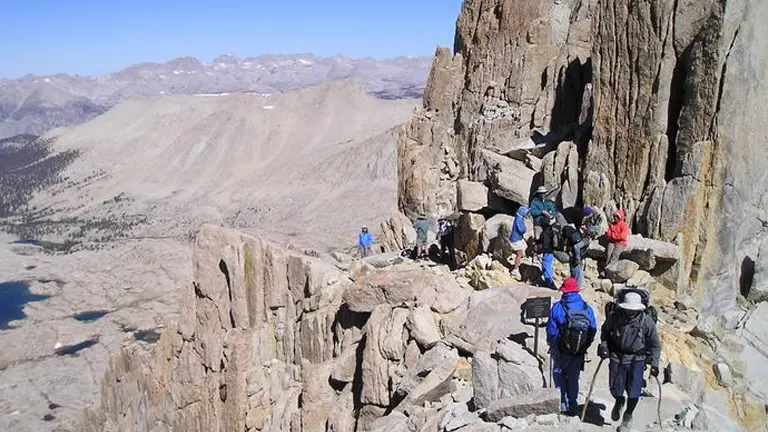
As the tallest peak in the contiguous United States, Mount Whitney is a bucket-list destination for many hikers. The 22-mile round-trip trail requires a permit and offers challenging elevation gains, but the view from the summit at 14,505 feet is unparalleled. Preparation for altitude and changing weather conditions is essential.
- Length: 22 miles (35.4 km) round trip
- Elevation Gain: 6,100 feet (1,860 m)
- Difficulty: Very strenuous
- Permits: Required, obtained via lottery.
- Best Time to Hike: Late June to early October.
- Tips: Acclimate to altitude in the area before your hike; carry the ten essentials and be prepared for sudden weather changes.
5. Lost Coast Trail
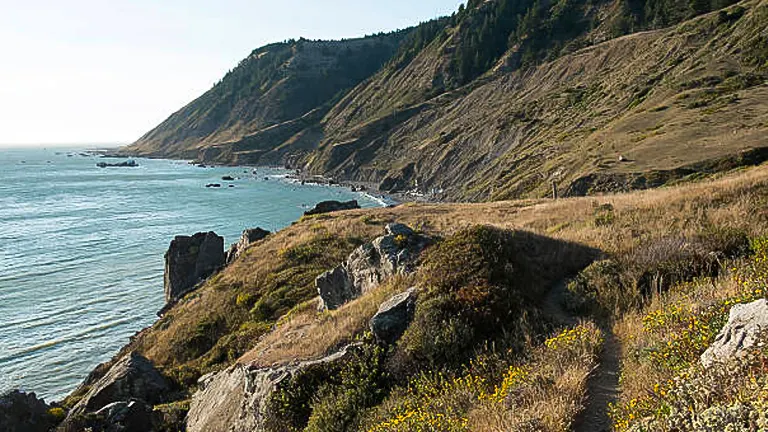
Traversing the remote stretches of California’s coastline, the Lost Coast Trail offers a unique hiking experience away from the hustle and bustle of city life. Known for its natural beauty, including tide pools, seal colonies, and untouched beaches, it’s a trail where one can truly feel at one with nature.
- Length: 24 miles (38.6 km) one way
- Elevation Gain: Minimal, but terrain can be challenging
- Difficulty: Moderate
- Permits: Required for overnight camping in the King Range National Conservation Area.
- Best Time to Hike: May to September, to avoid the rainy season.
- Tips: Be tide-aware; portions of the trail can be impassable at high tide. Pack out all trash as this is a leave-no-trace area.
6. Tahoe Rim Trail
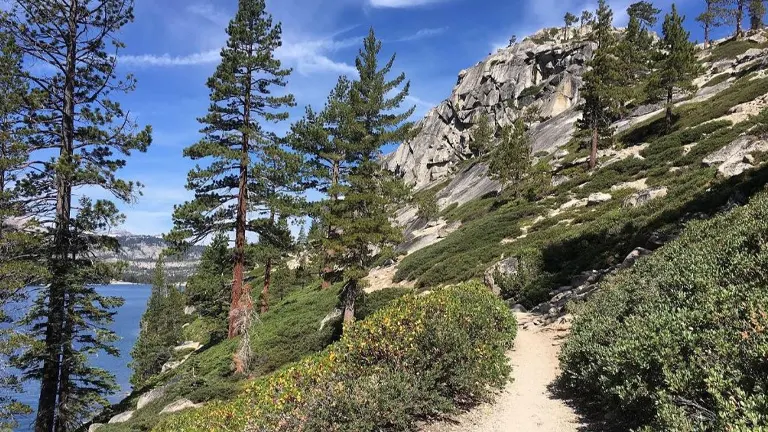
Encircling Lake Tahoe, America’s largest alpine lake, the Tahoe Rim Trail offers breathtaking views of the lake below and the surrounding Sierra Nevada. The trail crosses through six counties, two states, and one state park, and provides a variety of ecosystems and terrain.
- Length: 165 miles (265 km) loop
- Elevation Gain: Varies, with several passes over 9,000 feet
- Difficulty: Moderate to strenuous
- Permits: Not required for day hikes; certain sections may require permits for overnight camping.
- Best Time to Hike: July to September, when the trail is mostly snow-free.
- Tips: Consider segment hiking if you’re not up for the entire loop. Water sources can be scarce in dry years, so plan accordingly.
7. Big Sur Coastal Trail
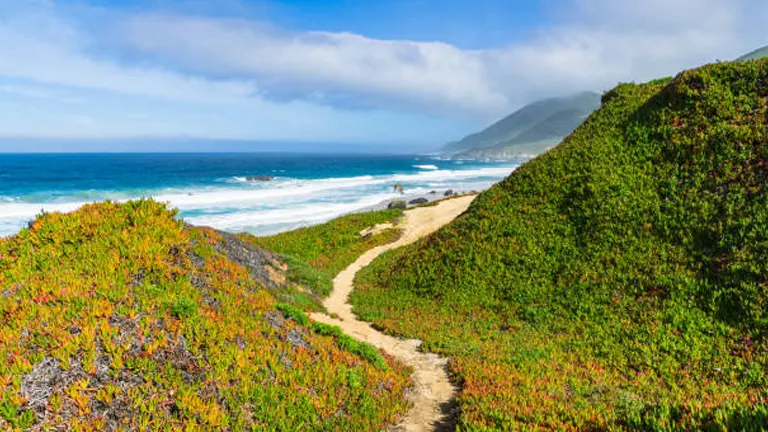
A trail that epitomizes the rugged beauty of California’s coastline, the Big Sur Coastal Trail offers hikers panoramic views of the Pacific Ocean, dense redwood forests, and the chance to see migrating whales off the coast.
- Length: Varies, with multiple access points and segments
- Elevation Gain: Varies by segment
- Difficulty: Easy to moderate, depending on the section
- Permits: Not typically required for day hikes; check local regulations for overnight trips.
- Best Time to Hike: Year-round, though spring and fall offer the most temperate weather.
- Tips: Be prepared for variable weather; coastal fog can roll in unexpectedly. Poison oak is prevalent in the area, so learn to identify and avoid it.
8. Sequoia National Park Trails
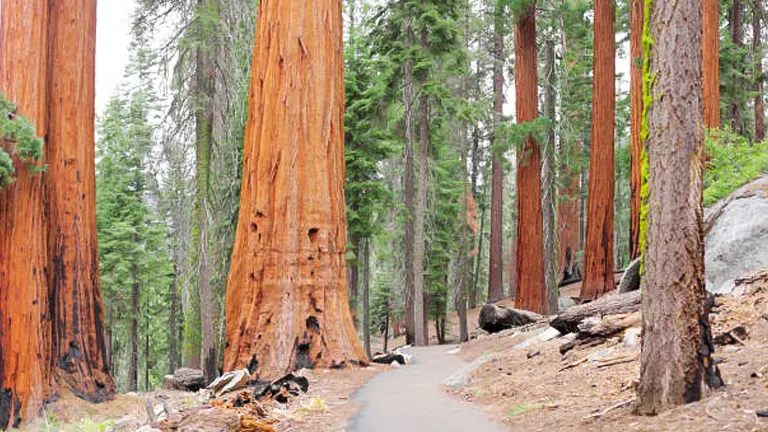
Home to the world’s largest trees, Sequoia National Park’s trails take hikers through ancient forests where the sheer scale of nature can be fully appreciated. The park offers everything from easy walks among the giants to challenging hikes up to high alpine lakes and meadows.
- Length and Elevation Gain: Varies significantly between trails.
- Difficulty: Ranges from easy to strenuous.
- Permits: Required for all overnight backcountry trips.
- Best Time to Hike: Late spring to early fall; snow can linger on higher trails until early summer.
- Tips: Carry bear-resistant food storage containers; black bears are common in the park. Check trail conditions before your trip, especially if hiking early in the season.
9. Joshua Tree National Park Trails

Joshua Tree National Park offers a surreal landscape filled with the park’s namesake Joshua trees, fascinating rock formations, and a variety of wildlife. The park’s trails range from short, easy walks to more challenging hikes that lead to panoramic views and hidden water features.
- Length & Elevation Gain: Varies. Popular trails like Ryan Mountain offer a 3-mile round trip with 1,075 feet of elevation gain.
- Difficulty: Easy to strenuous.
- Permits: Not required for day hikes. Overnight backpackers in the backcountry must register at trailhead kiosks.
- Best Time to Hike: October to May, to avoid extreme summer temperatures.
- Tips: Carry plenty of water, as sources are scarce. Watch for desert wildlife and respect their habitat.
10. Anza-Borrego Desert State Park Trails
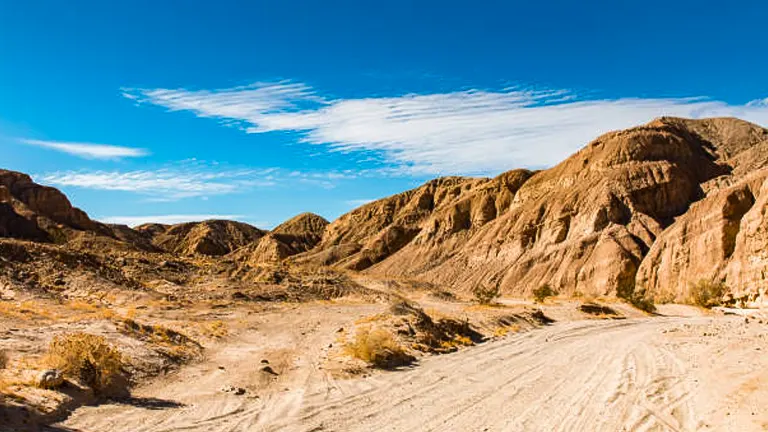
As California’s largest state park, Anza-Borrego offers over 600,000 acres of desert landscape to explore. Its trails lead through vast badlands, cactus-studded hills, and palm oases, offering a glimpse into the area’s diverse ecosystems.
- Length & Elevation Gain: Trails range from short, easy nature walks to strenuous, multi-day hikes.
- Difficulty: Varies widely.
- Permits: Free permits are required for overnight camping outside of developed campgrounds.
- Best Time to Hike: Late fall through early spring, to avoid the intense heat of summer.
- Tips: Spring visits can reward hikers with spectacular wildflower blooms. Be prepared for desert hiking conditions and navigation.
11. Lassen Volcanic National Park Trails
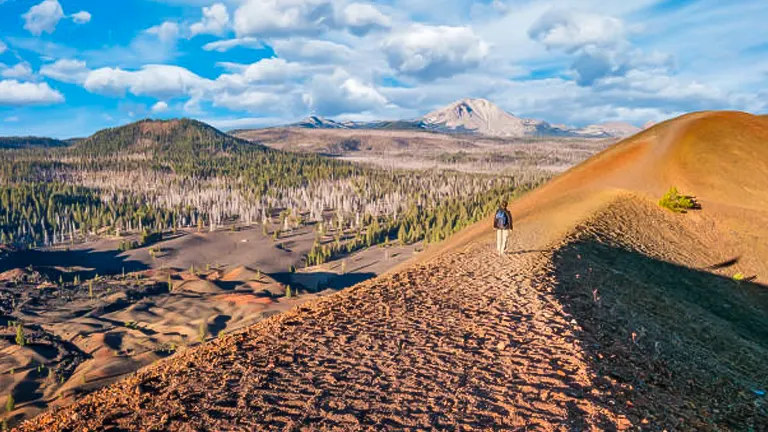
This park provides a unique opportunity to explore a variety of volcanic features including lava tubes, steaming fumaroles, and clear mountain lakes. Hiking here means walking through history, witnessing the Earth’s fiery power firsthand.
- Length & Elevation Gain: Trails like the Lassen Peak trail offer a 5-mile round trip with 2,000 feet of elevation gain.
- Difficulty: Moderate to strenuous.
- Permits: Not required for day hikes. Overnight wilderness permits are free but must be obtained in advance during peak season.
- Best Time to Hike: July to October, when most trails are snow-free.
- Tips: Even in summer, temperatures can vary widely; dress in layers. Be aware of altitude sickness symptoms when hiking higher trails.
12. Redwood National and State Parks Trails
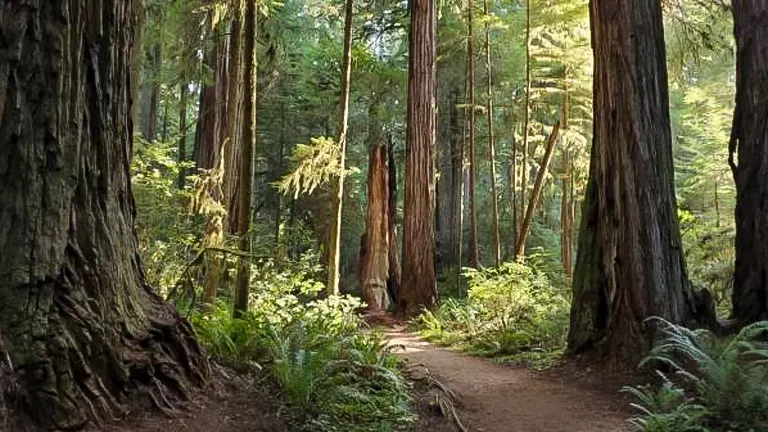
Home to the tallest trees on Earth, these parks offer a serene hiking experience through ancient redwood forests that feel timeless. Trails range from easy, family-friendly paths to more secluded and challenging hikes through the backcountry.
- Length & Elevation Gain: Varies. The James Irvine Trail to Fern Canyon offers an 11-mile round trip with minimal elevation gain.
- Difficulty: Easy to moderate.
- Permits: Not required for most day hikes; check specific trail regulations for overnight trips.
- Best Time to Hike: Year-round, though spring to early fall offers the most accessible conditions.
- Tips: Be prepared for wet conditions in the forests, especially in Fern Canyon. Respect wildlife and the delicate ecosystem of the redwoods.
Tips for an Unforgettable Hiking Experience
- Leave No Trace: Respect the wilderness. Carry out all trash, stay on trails to prevent erosion, and keep wildlife wild by observing from a distance.
- Photography: Capture the moment without harming the environment. Use zoom lenses for wildlife and tread lightly when positioning for that perfect shot.
- Safety First: Always tell someone your plans and expected return time. Carry a basic first aid kit, extra water, and a means of purification.
- Engage with Communities: Visit local visitor centers, respect cultural heritage sites, and support small businesses in gateway communities.
Conclusion
Exploring California’s trails offers an unparalleled opportunity to connect with nature, challenge oneself physically, and discover the diverse beauty of the Golden State. Whether you’re an experienced hiker or new to the trails, preparation, respect for the environment, and a spirit of adventure are key to making the most of your hiking experience. So lace up your boots, hit the trail, and discover the wonders of California’s great outdoors.
FAQs
- What trail offers the best night sky views in California?
The Lost Coast Trail is renowned for its minimal light pollution, providing hikers with stunning views of the Milky Way and constellations in the night sky. Remember to check the lunar calendar for the best stargazing nights. - Can I hike any of these trails without previous hiking experience?
Yes, the Big Sur Coastal Trail has segments suitable for beginners and offers breathtaking views of the Pacific Ocean. Always ensure you have adequate water, snacks, and a map. - Which trail is the most pet-friendly for hiking with dogs?
The Tahoe Rim Trail offers several pet-friendly sections, allowing you to enjoy the hike with your furry friend. However, keep your dog on a leash and be mindful of local wildlife and other hikers. - Are there any trails that are particularly good for wildflower viewing?
The Anza-Borrego Desert State Park Trails come alive with vibrant wildflower blooms in the spring, making it an exceptional time for hikers to visit. - What’s the best trail for a multi-day backpacking trip?
The John Muir Trail is ideal for a multi-day adventure, offering an epic journey through the High Sierra with stunning landscapes. It requires thorough preparation and permits. - Which trail offers the most challenging hike?
The Mount Whitney Trail is the most challenging due to its elevation gain and the altitude at the summit. It’s recommended for experienced hikers with proper acclimatization. - Is there a trail that combines both coastal and forested environments?
The Big Sur Coastal Trail offers a unique combination of rugged coastline and dense redwood forests, providing a diverse hiking experience. - What’s the best way to ensure I’m respecting the environment while hiking these trails?
Practicing Leave No Trace principles is key. Stay on designated trails, pack out all your trash, minimize campfire impacts, and respect wildlife and plants by observing them from a distance.
Explore our dedicated section on national forests and state parks to uncover hidden gems and outdoor wonders. Discover top recommendations in our best section, and delve into in-depth product reviews in our review section.
We want to hear from you! Drop your hiking stories, tips, and favorite moments in the comments. Let’s build a community focused on exploring and protecting these natural wonders. Your experiences can inspire and help others, so share away!

Benjamin Brooks
Forestry AuthorGreetings! I'm Benjamin Brooks, and my journey over the past 15 years has revolved around the fascinating realms of content creation, expertise in snow clearing, and the intricate world of lumberjacking and landscaping. What began as a simple curiosity about the natural world and heavy machinery has evolved into a passionate profession where my love for crafting words intertwines seamlessly with my lumberjacking and garden skills.













Leave your comment